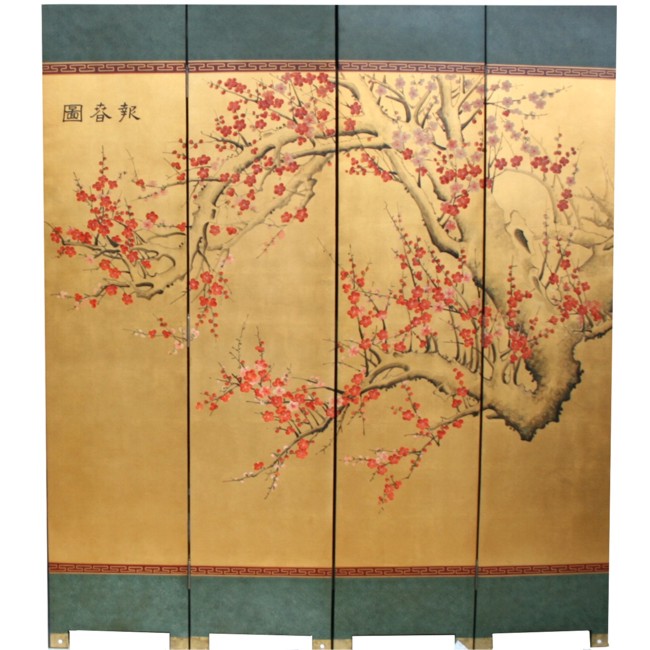|
Oriental Arts - Room Divider
Screen
History of folding screens starts in China, where
they appeared in the 14th century. These
sophisticated pieces of furniture were made in wide
range of sizes, from extremely large oversized
folding screens that were used in spacious palaces,
to miniature decorative screens that could
comfortably fit on a tabletop or wall hanging.
 |
Folding screens can be used as
room dividers which ware constructed from several
panels attached to each other. The most popular
in VII century China room dividers were six or
eight panels folding screens. Chinese masters are
famous for their complex ancient lacquer
application techniques. Most known technique used
in creation of folding screens - "naciju" - is a
labor intensive multi layered lacquer application
technique with gold leaf inserted into the
lacquer on the different levels. Masters applied
up to 30 layers of lacquer and each level had a
unique gold leaf pattern. As a result - a
magically glowing surface of the screen that
exudes energy. Another popular unique decorative
technique used by Chinese artisans in creation of
folding screens is dimensional carving on the
clay surface. |
Folding screens that are made by using this method
are known as Coromandel screens. Each panel of
coromandel screens was made from wood and covered
with many layers of soft clay followed with multiple
layers of lacquer. Then opulent designs with
landscapes, flora and fauna motives, and calligraphy
writing, were skilfully engraved in a different
relief (high and low) into the screens panels,
creating a breathtaking three dimensional effect. The
Coromandel screens were then painted and embellished
with gold or silver leaf. The unique screen making
techniques passed from generation to generation and
are widely used and popular today.
|
|